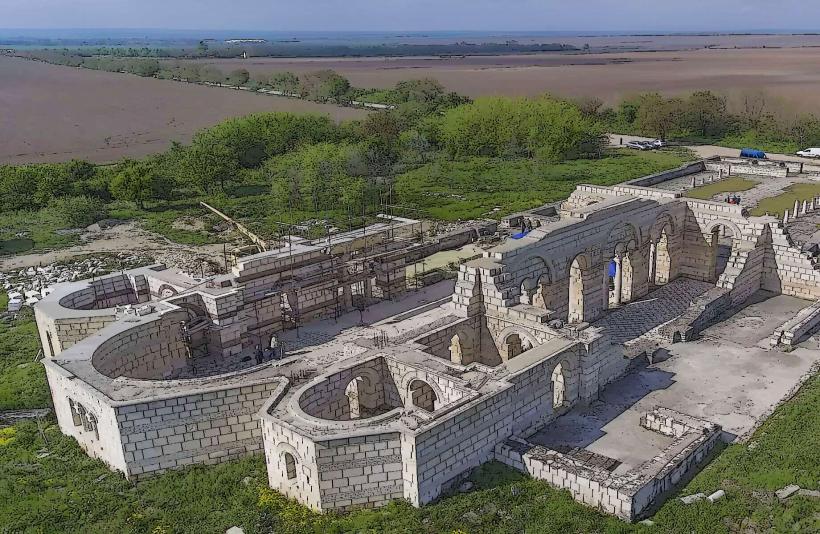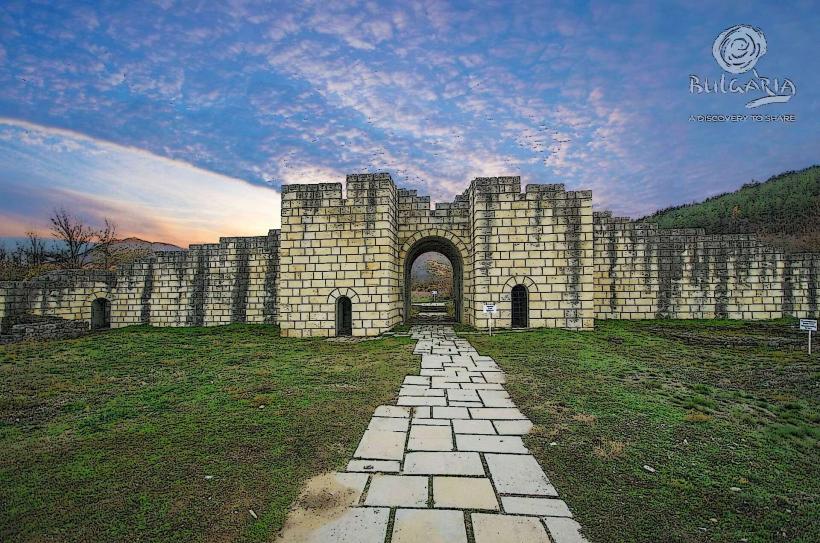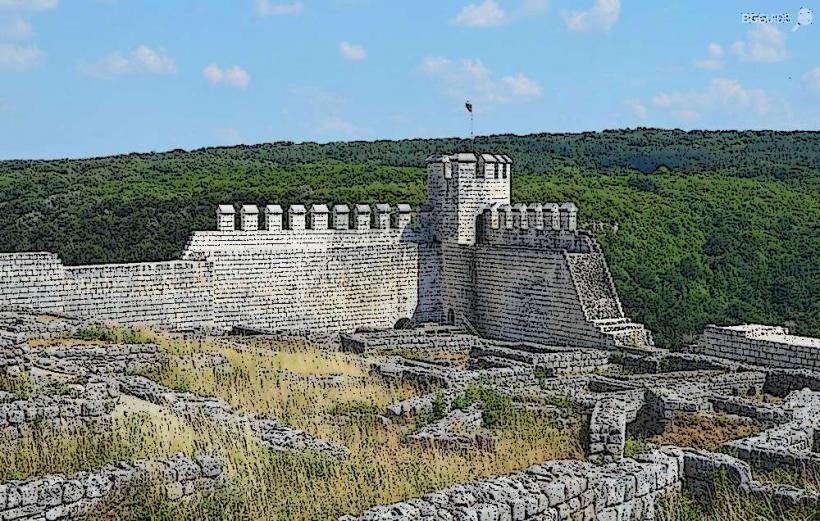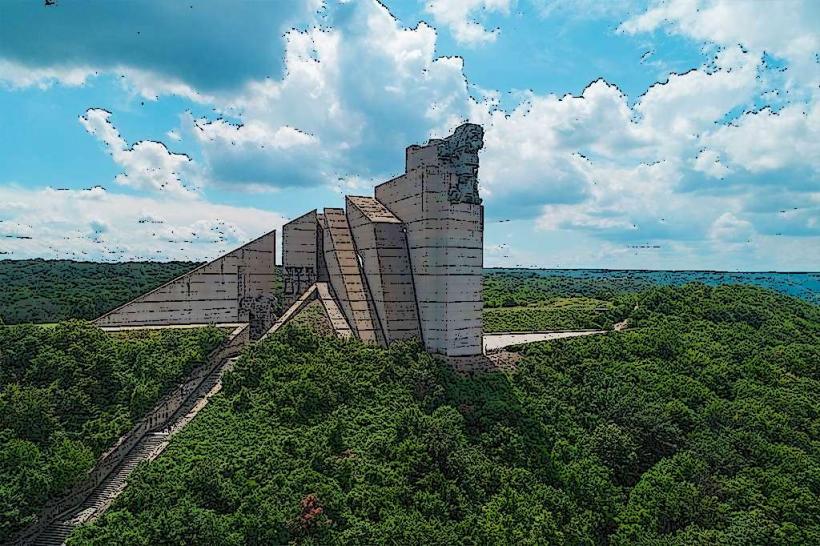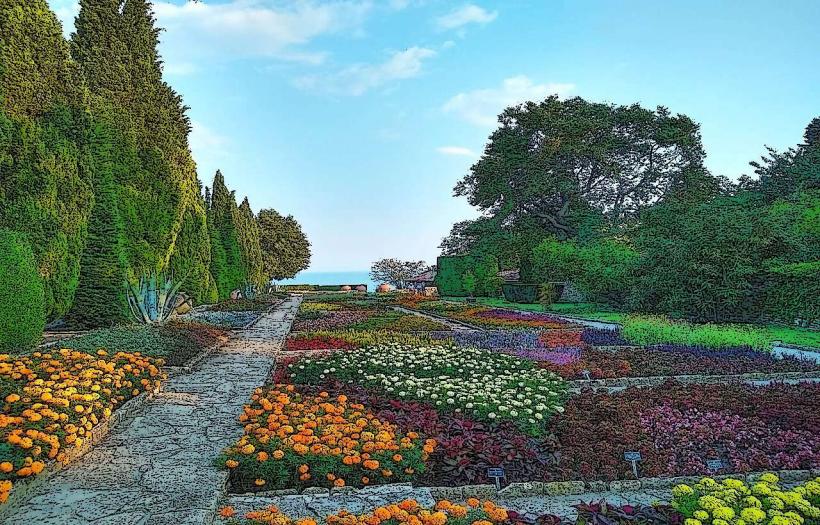Information
Landmark: Tombul MosqueCity: Shumen
Country: Bulgaria
Continent: Europe
The Tombul Mosque is one of the most significant and largest mosques in Bulgaria, located in the city of Shumen. It is renowned for its architectural beauty and historical importance, reflecting the period of Ottoman rule in Bulgaria and serving as a major religious and cultural landmark in the region.
Historical Background
- Construction: The Tombul Mosque was built in 1744, during the height of the Ottoman Empire in the Balkans. It was commissioned by the Ottoman pasha (governor) of the region, Kurshid Pasha, who was a high-ranking Ottoman official and military leader. The mosque was designed to serve as a significant religious and cultural center for the Muslim population in Shumen and the surrounding areas.
- Name: The mosque is named "Tombul," which comes from the Turkish word "tombul" meaning "round" or "bulging", possibly referring to the shape of its central dome or its large, imposing architectural form.
Architectural Features
- Size and Design: The Tombul Mosque is one of the largest mosques in Bulgaria, and its size makes it a prominent feature in the city of Shumen. The mosque is constructed in the traditional Ottoman style, with a large central dome and a slender minaret rising alongside it. The mosque's interior is designed to accommodate a large number of worshippers.
- Dome: The mosque’s most striking architectural feature is its massive dome, which is supported by an octagonal base and is one of the largest domes in Bulgaria. The dome is a defining element of Ottoman religious architecture, symbolizing the sky and the divine.
- Minaret: The mosque also has an elegant minaret, which stands tall and is used for the call to prayer (adhan). The minaret has a slender, cylindrical form, which is typical of Ottoman mosques, and it adds to the mosque's visual prominence in the cityscape.
- Interior: The interior of the mosque is richly decorated, featuring traditional Ottoman Islamic designs, including intricate calligraphy, geometric patterns, and arabesques. The mosque’s prayer hall is spacious, with a large central area for worshippers. The mihrab (niche indicating the direction of Mecca) and the minbar (pulpit) are prominently placed inside.
- Courtyard: Like many mosques, the Tombul Mosque has a spacious courtyard with a fountain for ablutions (ritual washing) before prayer. The courtyard is surrounded by a colonnade, adding to the grandeur of the mosque.
Cultural and Religious Importance
- Religious Role: As a major mosque in the region, the Tombul Mosque has historically served as a religious center for the Muslim community in Shumen. It continues to function as an active mosque, offering daily prayers and special religious services, including during Ramadan and Eid.
- Cultural Significance: The mosque is not only a place of worship but also an important cultural symbol of the Ottoman presence in the region. It reflects the long-standing history of Islam in Bulgaria, which dates back to the Ottoman occupation that lasted for nearly 500 years.
- Educational Influence: In the past, the mosque was often a center for education, with madrasas (Islamic schools) teaching religious studies, as well as subjects such as mathematics, astronomy, and medicine, following the tradition of Ottoman educational institutions.
Architectural Style and Influence
- The Tombul Mosque is built in the Ottoman Baroque style, a variation of the Ottoman architectural tradition that developed in the late 17th and 18th centuries. This style is characterized by grand domes, decorative elements, and the blending of Islamic religious architecture with local stylistic influences.
- The mosque is influenced by the grand mosque buildings of the Ottoman Empire, particularly those constructed during the reign of the Sultans in the 17th and 18th centuries. This influence can be seen in the mosque’s use of large spaces, domes, and elaborate decorative work.
Modern Context
- Restoration and Preservation: The Tombul Mosque has undergone several restorations over the years, especially in the post-communist era, when efforts were made to preserve the country’s religious and cultural heritage. It is now a protected cultural monument in Bulgaria and is considered a symbol of Shumen's Ottoman heritage.
- Tourist Attraction: The mosque is an important tourist attraction in Shumen. Visitors are drawn to its striking architecture and historical significance. While it is a working mosque, tourists are allowed to visit outside of prayer times, and the mosque is included in guided tours of the city’s historical sites.
- Interfaith Dialogue: The Tombul Mosque has become a symbol of religious tolerance in Bulgaria. It stands as a testament to the long coexistence of different religious communities in Bulgaria, including Christian and Muslim populations, particularly in Shumen, which has a long history of diverse cultural and religious traditions.
Controversies and Challenges
- Post-Communist Changes: Following the fall of communism in Bulgaria in 1989, there was a resurgence of nationalism and religious identity, which led to some challenges regarding the role of mosques and other Ottoman-era monuments in the country. However, the Tombul Mosque has largely been spared from such controversies due to its historical and architectural significance.
Conclusion
The Tombul Mosque stands as a prominent historical and cultural monument in Shumen, representing the Ottoman influence on Bulgaria's history and architectural heritage. Its grand design, historical significance, and role as a religious and cultural center make it one of the key landmarks in the city. As an active mosque, it continues to serve the local Muslim community, while also being a symbol of religious tolerance and a site of interest for visitors seeking to explore Bulgaria's diverse history.


